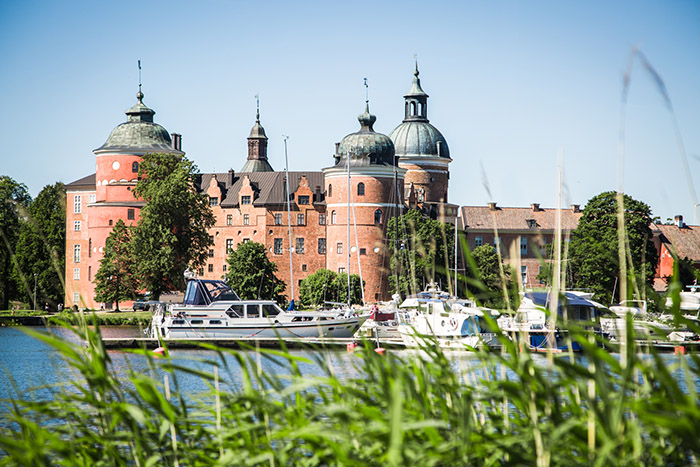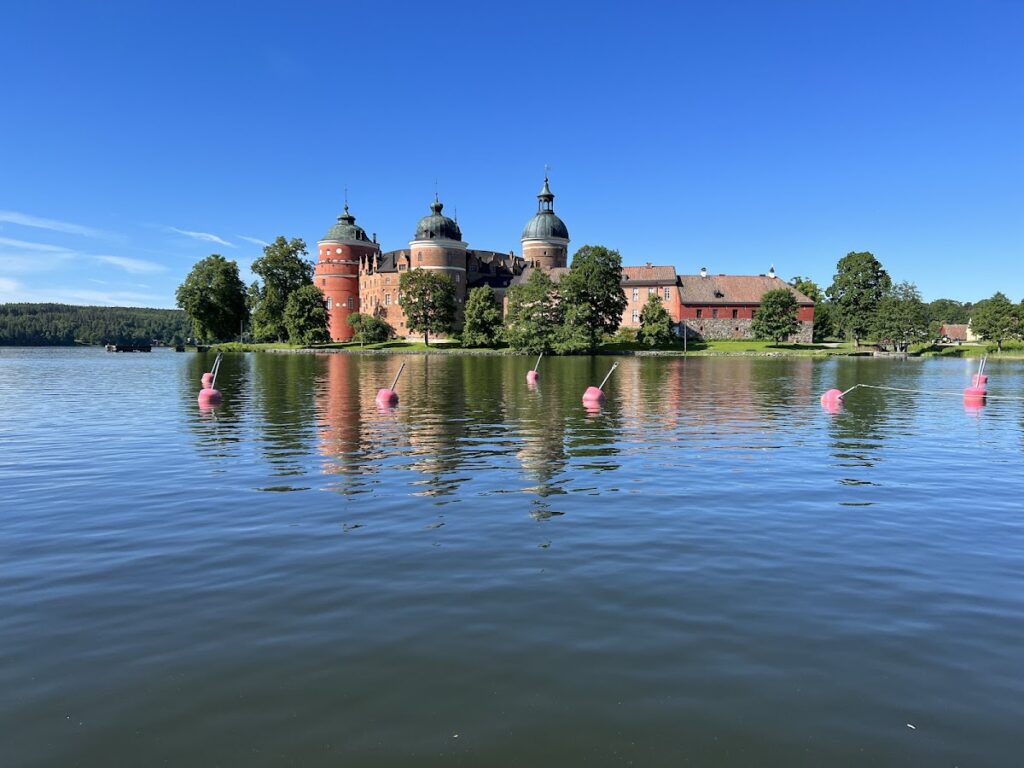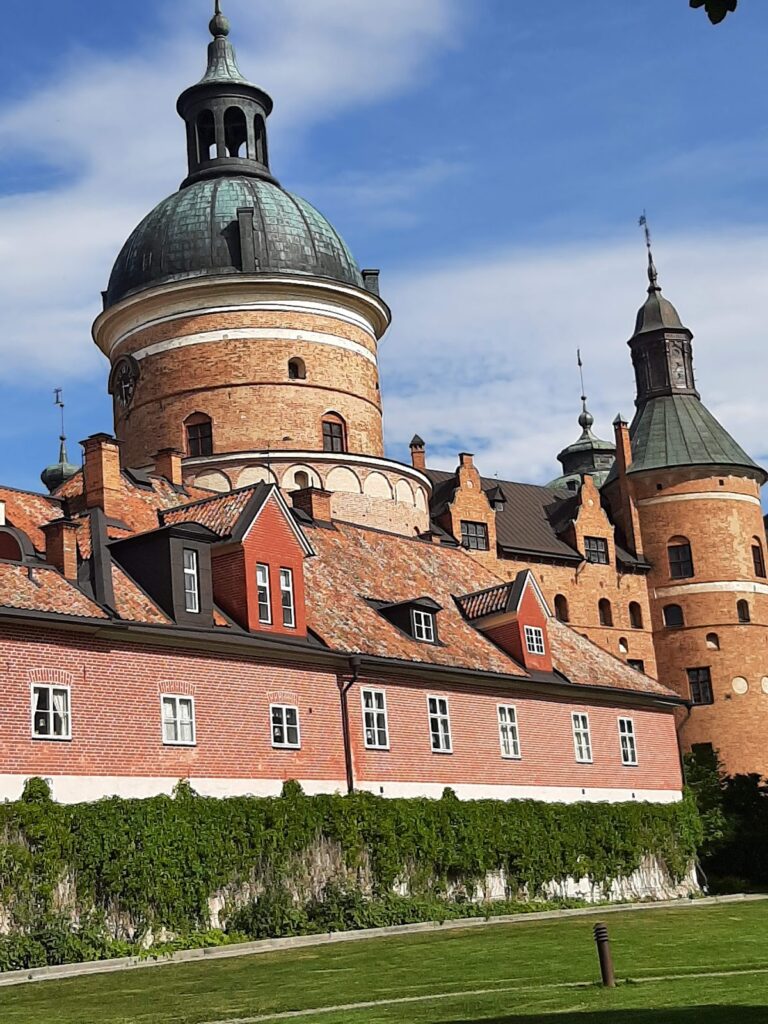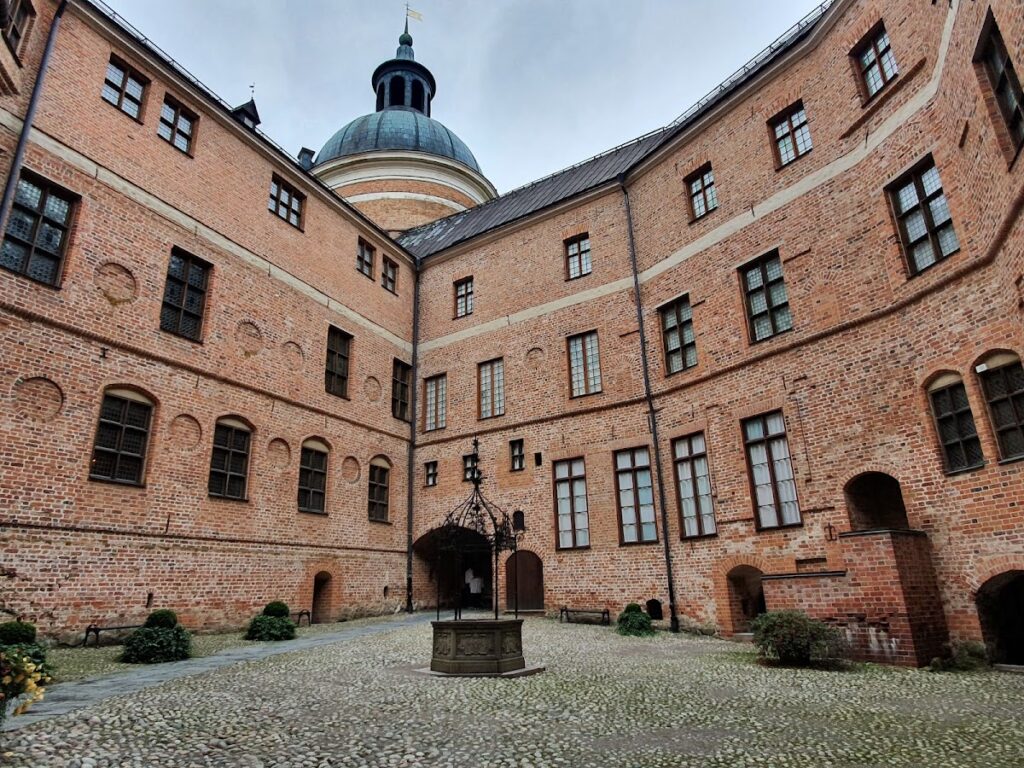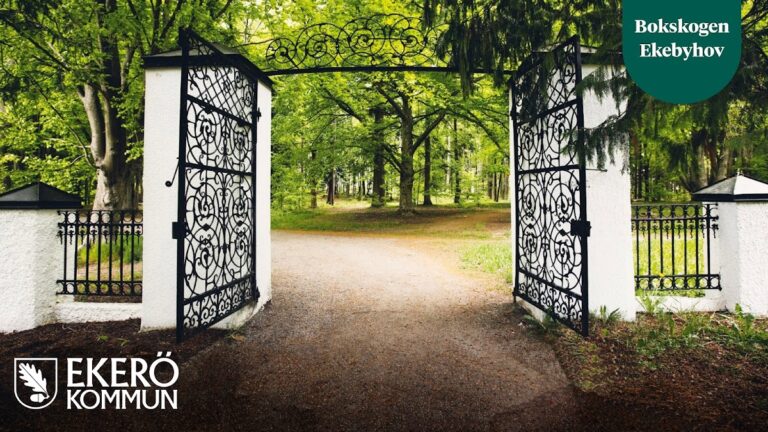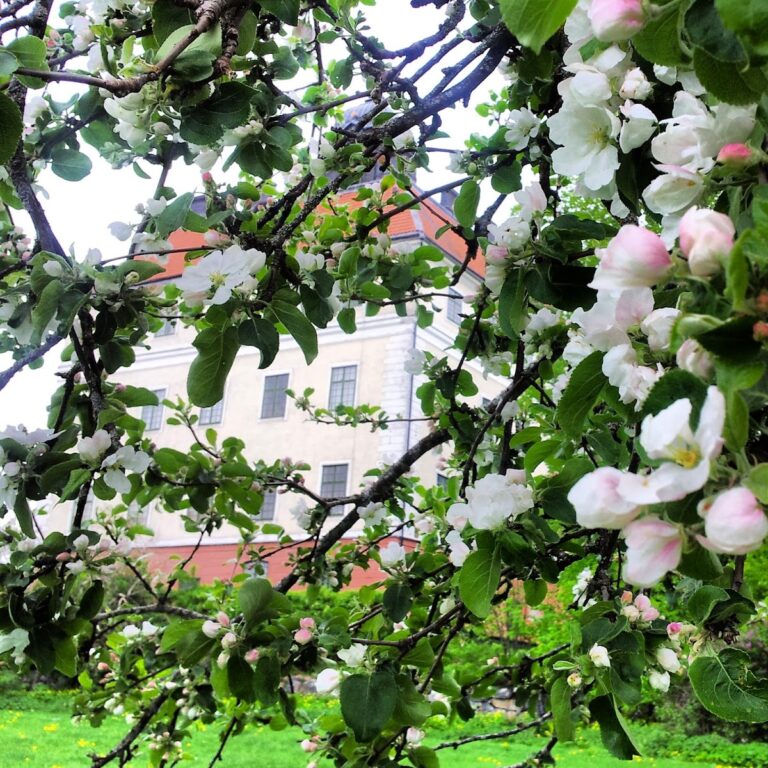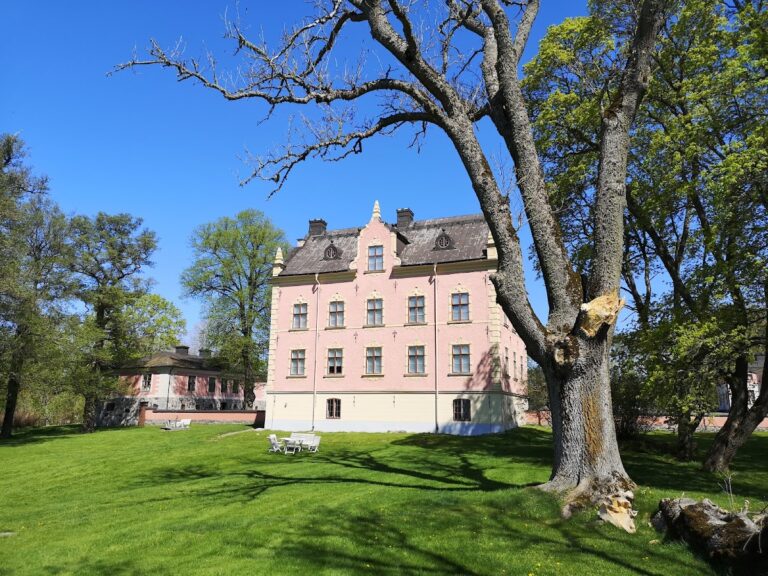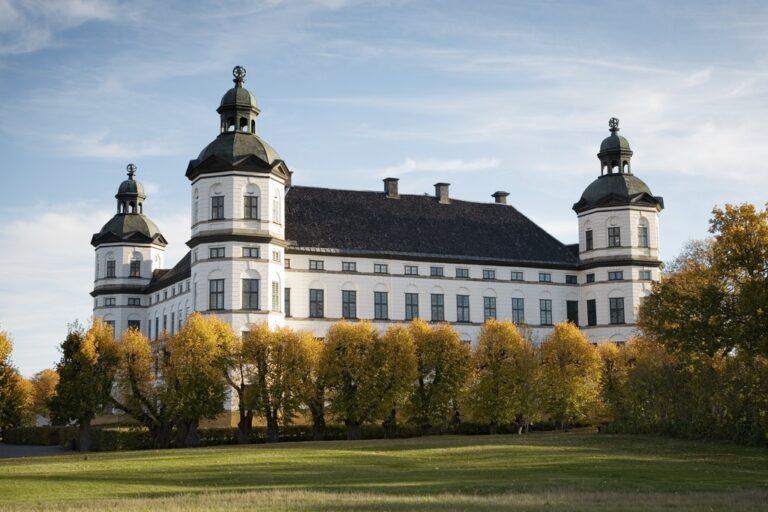Gripsholm Castle: A Historic Royal Fortress in Sweden
Visitor Information
Google Rating: 4.5
Popularity: Medium
Google Maps: View on Google Maps
Official Website: www.kungligaslotten.se
Country: Sweden
Civilization: Unclassified
Remains: Military
History
Gripsholm Castle, located in Mariefred, Sweden, was originally constructed by the medieval Swedish nobility. Its foundation dates back to the late 14th century when Bo Jonsson Grip built a fortress on an island in Lake Mälaren between 1377 and 1380. The name “Gripsholm” emerged in 1381, derived from Bo Jonsson’s family emblem featuring a griffin’s head, which gave the castle its symbolic identity.
Following Bo Jonsson Grip’s death in 1386, the fortress passed through several hands, including prominent figures such as Queen Margaret and later Sten Sture the Elder, who acquired it in 1472. In 1493, Sten Sture transferred Gripsholm to the Carthusian monastic order, which established the nearby Pax Mariae monastery. However, during the Swedish Reformation in 1526, King Gustav I Vasa dissolved the monastery, taking possession of Gripsholm as Sten Sture’s heir.
From 1537 onward, King Gustav I initiated the construction of a new castle built in brick, replacing the earlier fortress. This construction aimed to create a defensible stronghold against both foreign enemies and internal conflicts. His sons, including Erik XIV and Duke Charles, continued to develop the castle through the late 16th century. Gripsholm was closely tied to royal intrigues; Erik XIV held his brother John III and John’s wife, Katarina Jagellonica, prisoner there from 1563 to 1567. Their son Sigismund was born during this captivity. Afterwards, John III imprisoned Erik XIV at Gripsholm between 1571 and 1573, underscoring the castle’s role as a royal prison.
In the 17th century, Gripsholm was part of the dower estate of Queen Hedvig Eleonora from 1654 until 1715. She made notable contributions to the castle’s structure, including the addition of the Queen’s Wing in 1691 and replacing the roof with copper in 1708. Later, in the late 18th century, King Gustav III frequently stayed at the castle. Between 1781 and 1782, he established a theater within the castle’s tower, enlisting architect Erik Palmstedt for its design, reflecting the era’s cultural interests.
The 1890s saw a major restoration led by architect Fredrik Lilljekvist, who sought to restore the castle’s exterior to its appearance in the late 16th century. This extensive renovation provoked debate about historical accuracy, but it restored many of the castle’s Renaissance features. Since 1820, Gripsholm has housed the Swedish National Portrait Gallery, containing thousands of portraits that represent Swedish history from the 16th century onward. The collection has been managed by Nationalmuseum since the 1860s. Gripsholm remains a royal palace under state ownership and was recognized as a significant cultural monument in Sweden’s cultural canon in 2025.
Remains
Gripsholm Castle presents a fortified layout centered around a square courtyard enclosed by four round towers, built primarily from brick atop a gray stone foundation. This design dates back to the construction initiated by King Gustav I in the mid-16th century. The medieval fortress that preceded it survives only in fragments, including two gray stone facades located near the Crown Kitchen and parts of the cellar in Sture’s Bastion within the inner bailey, providing tangible links to the castle’s earliest phase.
Each corner of the castle is marked by a distinct tower. Griptornet, historically a defensive stronghold, contains vertical passages for the movement of supplies and ammunition. It also functioned as a prison, evidenced by inscriptions dating from the 17th century found on its walls. Vasatornet is arranged with single rooms on each floor, featuring historically significant chambers such as King Gustav I’s bedchamber and, from a later period, Gustav III’s divan room, which now displays a collection of self-portraits.
Teatertornet, the largest tower situated on the southern end, served both as a defensive element and a royal residence. Its upper floor housed a chapel until 1738, after which the space was transformed into a theater between 1781 and 1782. Designed by architect Erik Palmstedt under King Gustav III, the theater retains original stage machinery and decorative features, including plaster statues of muses created by Tobias Sergel. Above the theater, the second floor contains Gustav III’s round salon, redecorated in 1779 by Jean Eric Rehn, which was used for royal receptions and to display family portraits.
The Fängelsetornet, or Prison Tower, holds particular historical significance due to its association with the imprisonment of John III and Erik XIV during the turbulent 16th century.
Beyond the towers, the castle complex includes the Kavaljersflygeln, or Cavalier’s Wing, constructed in 1780 on the eastern side of the outer courtyard by Fredrik Adolf Ulrik Cronstedt. This four-story brick building housed 28 modest residential rooms for court officials, each arranged with antechambers and living quarters. The castle is encircled by a moat originally equipped with a drawbridge; although the moat was filled during King Gustav III’s reign, it was reopened in the 1890s restoration, which also introduced a new drawbridge.
The restoration led by Fredrik Lilljekvist in the 1890s involved raising portions of the castle facing the inner courtyard by an additional floor and applying decorative painting to the facades. Window openings were altered, and metal details were added, along with a turret built over the gatehouse in the outer bailey. An ornamental well from the 1897 Stockholm Exhibition was installed within the inner courtyard during this renovation.
The outer courtyard is notable for displaying two large artillery pieces known as “Galten” and “Suggan,” cannons cast in the late 16th century and acquired as trophies from Russia in 1623. Inside the castle, 16th-century stained glass crafted by Urban Glasmakare in 1541 and metalwork by Peter Holländer from 1544 still survive, underscoring the castle’s rich artisanal heritage. The castle grounds historically contained various gardens, including a walled herb garden created between 1551 and 1555 by gardener Hans Friese, as well as other kitchen gardens and hop yards situated near the main buildings.
Between 1965 and 1967, the castle’s inner courtyard facades were stripped of plaster, revealing their original unplastered brick surfaces, a condition likely unseen since the castle’s early years. Overall, Gripsholm Castle conserves architectural and interior elements spanning from the Renaissance through the 19th-century Gustavian modifications, including one of Sweden’s finest preserved court theaters.
